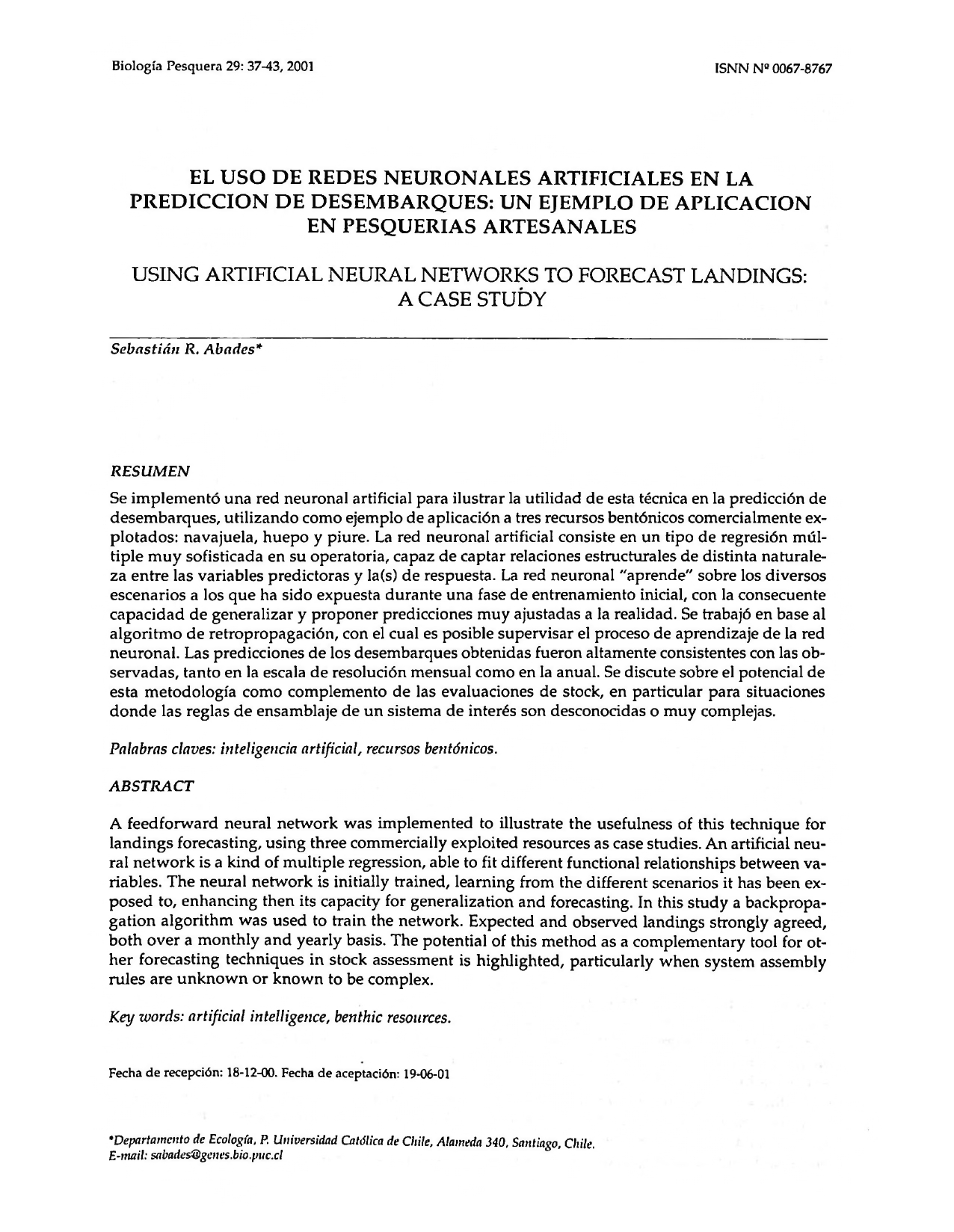USING ARTIFICIAL NEURAL NETWORKS TO FORECAST LANDINGS: A CASE STUDY
DOI:
https://doi.org/10.21703/0067-8767.2001.29.2616Keywords:
artificial intelligence, benthic resources.Abstract
A feedforward neural network was implemented to illustrate the usefulness of this technique for landings forecasting, using three commercially exploited resources as case studies. An artificial neural network is a kind of múltiple regression, able to fit different functional relationships between variables. The neural network is initially trained, leaming from the different scenarios it has been exposed to, enhancing then its capacity for generalization and forecasting. In this study a backpropagation algorithm was used to train the network. Expected and observed landings strongly agreed, both over a monthly and yearly basis. The potential of this method as a complementary tool for other forecasting techniques in stock assessment is highlighted, particularly when system assembly rules are unknown or known to be complex.




